The Catalyst Killing - [12]
She was a rather attractive redhead and she was waiting patiently on a chair, with a white stick in her hands. Her eyes stared blankly at me when she took off her dark glasses.
XI
I immediately led the witness and her dog into my office. Her name was Aase Johansen, she was twenty-five years old and lived with her parents in her childhood home in Smestad. She had tried to find a course at the university that was suitable for blind students and that interested her, but without any luck. She now therefore spent the greater part of her day listening to the radio and reading. The evening before, she had been on her way to meet a friend with her dog and had been heading in the direction of the station. And even though she had not been able to see what happened, she had heard enough to think she should report to the police, when the request for witnesses to come forward was announced on the radio.
I immediately thanked her for coming and said that it was indeed the right thing to do. I asked her to recall as well as she could what she had heard, and to tell me in as much detail as possible anything she thought might be of interest.
Aase Johansen took this task very seriously. She started by pointing out that she could of course not be one hundred per cent certain, but that she was at least ninety per cent sure that it was Marie Morgenstierne who had been walking in front of her yesterday evening. She knew the road very well, and she was just past the lamppost that was a couple of hundred yards from the station. So the timing fitted, as she had arrived at her friend’s flat, which was only a hundred yards or so from there, at around a quarter past ten. Aase Johansen had reacted immediately when a woman who was walking at a steady, relaxed pace about ten yards in front suddenly broke into a run. And they were the fastest steps the blind woman could ever recall having heard on the streets of Oslo. In addition, she had heard someone on the road call out ‘Marie!’ But the woman who must have been Marie Morgenstierne did not slow down – if anything, she ran faster.
All in all, it had been strange enough for her to feel it was the right thing to come here, my blind witness said in a slightly anxious voice. I nodded reassuringly, then realized that that was not of much help, so put my hand gently on her arm. Then I asked if she had heard any other people on the road.
Aase Johansen nodded eagerly. She had not heard anyone ahead of Marie Morgenstierne on the road, but she had heard two different sets of footsteps between herself and Marie. The first belonged to a man with a walking stick. Our blind witness had automatically assumed that it was an older man, but added that his breathing did not appear to be laboured and he walked at a steady pace. It had sounded as though this man with a stick had carried on walking at the same steady pace even after Marie Morgenstierne had started to run. Behind him, and just in front of the blind woman, were the steps of another younger person, in all likelihood a woman. These steps had at first picked up speed and then stopped completely in the wake of Marie Morgenstierne’s sudden flight.
The blind witness said that she could not be certain what happened in this confusion, as the footsteps then became indistinct, but also because she was at this point almost pushed over by a person with a suitcase who tried to get past her from behind. She was fairly certain that the person with the suitcase was a man, given the short and violent outburst when he bumped into her. However, she would not dare to guess his age. It sounded as though the man with the suitcase also picked up speed along with Marie Morgenstierne, but then stopped. At this point, the soundscape was so confused that the witness was not at all sure about the situation. The person who shouted ‘Marie!’ did sound like a woman, but it was so quick, and there was so much other noise.
Aase Johansen had never regretted being blind as much as she did now, she said. Her whole adult life she had hoped that one day she might do something useful for society, even though she could not see. And now she had unexpectedly been given a chance, but could not be of any real help because she was blind. It was terribly disappointing that she had been present minutes before a serious crime and could perhaps have been able to explain what had happened if she had only been able to see. A couple of tears trickled down beneath her dark glasses when she said this.
I patted her reassuringly on the shoulder and said that she had done more than anyone could expect, and had given information that might prove to be decisive. She beamed and asked if that really was true, then added that I must not hesitate to call her should I have any more questions. However, here and now, she could not think of anything else that might be of importance.
I thought for a moment or two without coming up with any questions, so I asked if she and her dog could wait out in the hall for a few minutes. She nodded happily and replied that she would be willing to wait for a few hours if there was the slightest chance that she could be of any help to me and the investigation.
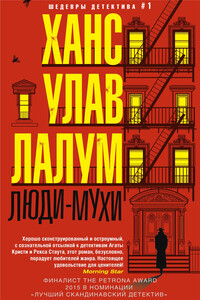
Убит бывший лидер норвежского Сопротивления и бывший член кабинета министров Харальд Олесен. Его тело обнаружено в запертой квартире, следов взлома нет, орудие убийства отсутствует. На звук выстрела к двери Олесена сбежались все соседи, но никого не увидели. Инспектор уголовного розыска Колбьёрн Кристиансен считает, что убийство, скорее всего, совершил кто-то из них. Более того, он полагает, что их показания лживы.
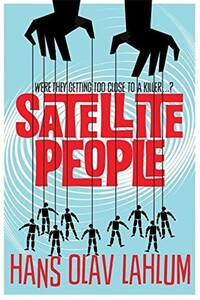
A gripping, evocative, and ingenious mystery which pays homage to Agatha Christie, Satellite People is the second Norwegian mystery in Hans Olav Lahlum's series. Oslo, 1969: When a wealthy man collapses and dies during a dinner party, Norwegian Police Inspector Kolbjorn Kristiansen, known as K2, is left shaken. For the victim, Magdalon Schelderup, a multimillionaire businessman and former resistance fighter, had contacted him only the day before, fearing for his life. It soon becomes clear that every one of Schelderup's 10 dinner guests is a suspect in the case.
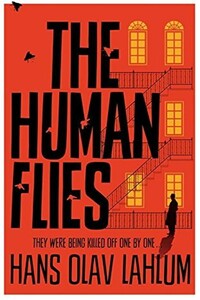
Oslo, 1968: ambitious young detective Inspector Kolbjorn Kristiansen is called to an apartment block, where a man has been found murdered. The victim, Harald Olesen, was a legendary hero of the Resistance during the Nazi occupation, and at first it is difficult to imagine who could have wanted him dead. But as Detective Inspector Kolbjorn Kristiansen (known as K2) begins to investigate, it seems clear that the murderer could only be one of Olesen's fellow tenants in the building. Soon, with the help of Patricia – a brilliant young woman confined to a wheelchair following a terrible accident – K2 will begin to untangle the web of lies surrounding Olesen's neighbors; each of whom, it seems, had their own reasons for wanting Olesen dead.
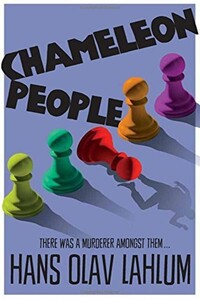
From the international bestselling author, Hans Olav Lahlum, comes Chameleon People, the fourth murder mystery in the K2 and Patricia series.1972. On a cold March morning the weekend peace is broken when a frantic young cyclist rings on Inspector Kolbjorn 'K2' Kristiansen's doorbell, desperate to speak to the detective.Compelled to help, K2 lets the boy inside, only to discover that he is being pursued by K2's colleagues in the Oslo police. A bloody knife is quickly found in the young man's pocket: a knife that matches the stab wounds of a politician murdered just a few streets away.The evidence seems clear-cut, and the arrest couldn't be easier.
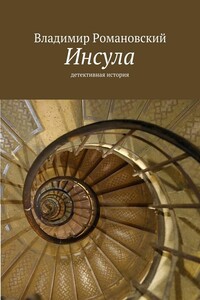
Детективная история, произошедшая в Санкт-Петербурге. Обычные люди в необычных обстоятельствах. Любовь, ненависть, жадность, драки и власть.
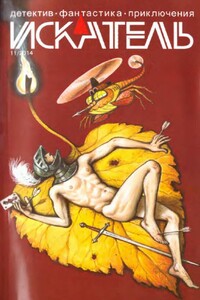
«ИСКАТЕЛЬ» — советский и российский литературный альманах. Издаётся с 1961 года. Публикует фантастические, приключенческие, детективные, военно-патриотические произведения, научно-популярные очерки и статьи. В 1961–1996 годах — литературное приложение к журналу «Вокруг света», с 1996 года — независимое издание.В 1961–1996 годах выходил шесть раз в год, в 1997–2002 годах — ежемесячно; с 2003 года выходит непериодически.Содержание:Анатолий Королев ПОЛИЦЕЙСКИЙ (повесть)Олег Быстров УКРАДИ МОЮ ЖИЗНЬ (окончание) (повесть)Владимир Лебедев ГОСТИ ИЗ НИОТКУДА.
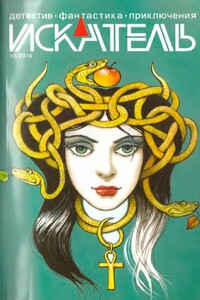
«ИСКАТЕЛЬ» — советский и российский литературный альманах. Издается с 1961 года. Публикует фантастические, приключенческие, детективные, военно-патриотические произведения, научно-популярные очерки и статьи. В 1961–1996 годах — литературное приложение к журналу «Вокруг света», с 1996 года — независимое издание.В 1961–1996 годах выходил шесть раз в год, в 1997–2002 годах — ежемесячно; с 2003 года выходит непериодически.Содержание:Олег Быстров УКРАДИ МОЮ ЖИЗНЬ (повесть);Петр Любестовский КЛЕТКА ДЛЯ НУТРИИ (повесть)
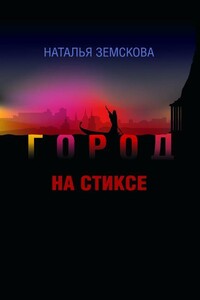
Наталья Земскова — журналист, театральный критик. В 2010 г. в издательстве «Астрель» (Санкт-Петербург) вышел её роман «Детородный возраст», который выдержал несколько переизданий. Остросюжетный роман «Город на Стиксе» — вторая книга писательницы. Молодая героиня, мечтает выйти замуж и уехать из забитого новостройками областного центра. Но вот у неё на глазах оживают тайны и легенды большого губернского города в центре России, судьбы талантливых людей, живущих рядом с нею. Роман «Город на Стиксе» — о выборе художника — провинция или столица? О том, чем рано или поздно приходится расплачиваться современному человеку, не верящему ни в Бога, ни в черта, а только в свой дар — за каждый неверный шаг.
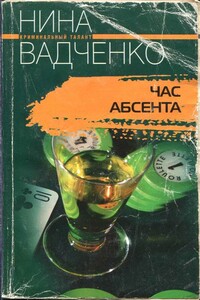
А ведь все так невинно начиналось! Четыре подружки коротали вечерок с бутылочкой «зеленого дьявола» и вели милую дамскую беседу о том… как бы им «грамотно» отправить на тот свет ненавистного шефа. Почему бы не помечтать о приятном в теплой дружеской компании? Все бы ничего, да только шефа вскоре действительно нашли мертвым, к тому же кто-то снял на видео посиделки четырех любительниц абсента. Впрочем, они и сами друг друга теперь подозревают. И распутать этот клубок противоречий по силам только их старой знакомой, неугомонной журналистке Инне Пономаренко…
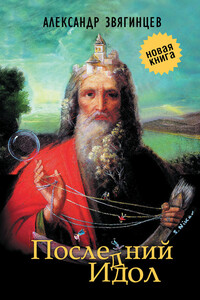
В сборник «Последний идол» вошли произведения Александра Звягинцева разных лет и разных жанров. Они объединены общей темой исторической памяти и личной ответственности человека в схватке со злом, которое порой предстает в самых неожиданных обличиях. Публикуются рассказы из циклов о делах следователей Багринцева и Северина, прокуроров Ольгина и Шип — уже известных читателям по сборнику Звягинцева «Кто-то из вас должен умереть!» (2012). Впервые увидит свет пьеса «Последний идол», а также цикл очерков писателя о событиях вокруг значительных фигур общественной и политической жизни России XIX–XX веков — от Петра Столыпина до Солженицына, от Александра Керенского до Льва Шейнина.